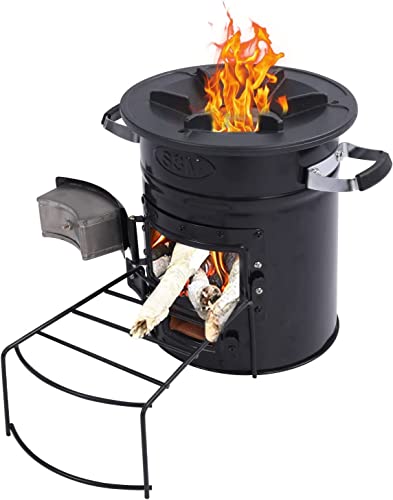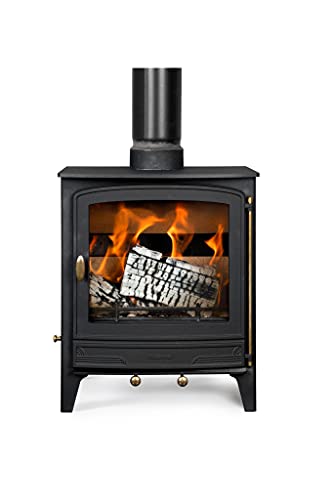10 Untrue Answers To Common Wood Burners Questions: Do You Know The Co…
Jani
2024.12.07 17:24
302
0
본문
 Types of Wood Burners Near Me
Types of Wood Burners Near MeWood-burning stoves are an easier and more efficient alternative to costly fossil fuels and electricity. They also decrease dependence on imported wood, a major source of carbon.
In communities where wood smoke is common studies have revealed that it contributes to wintertime pollution in the air. This can be especially relevant in valleys that are prone to temperature shifts.
1. Pine
It is common to make use of pine wood for log burners. However, it has to be dried out prior to use indoors. Unseasoned pine wood is more likely to generate creosote which can lead to chimney blockages. Unseasoned pine wood can also produce a lot of smoke and carbon dioxide, which can be harmful to both humans and animals.
Many people do not recommend using pine wood for firewood due to its high resin content and fears of creosote accumulation. Creosote is a substance that resembles tar that coats the inside of your chimney flue. It traps smoke preventing it from exiting your home. If it is allowed to build up, it can cause the chimney to catch fire, which is extremely hazardous. Hardwoods like oak Hickory, maple, and Ash do not produce much creosote, and they burn more hotly and produce less smoke.
It is because pine wood isn't properly seasoned, that it produces an abundance of creosote. All wood needs to be properly seasoned prior to burning inside. Seasoning the wood removes the moisture content, making it easier to ignite and burn. When pine wood has been treated to a seasoning process it will burn more quickly with less sparks and spitting. It also produces a lot of heat. It will still release an enormous amount of creosote when it is burned. Most people prefer hardwoods like oak or hickory over pine wood when burning it.
2. Cedar
It is a softwood and although it produces good heat, its output is not as high as other firewoods made of hardwood. It burns fast and can cause creosote to accumulate in the chimney. Many people are hesitant to use cedar in their fireplaces due to this.
People who don't have concerns about creosote and other issues can choose to use cedar for outdoor wood fire stove fireplaces that burn wood. Cedar isn't the best choice for indoor fireplaces, though due to the oil that it releases during combustion. If you want to use cedar indoors, pair it with a denser wood like oak or hickory.
The price of a firewood cord could range between $150 and $500. The amount of wood you purchase can last for 6 to 12 weeks when you burn it twice every day.
If you don't want to purchase a whole cord then you can cut your own firewood and save cost. Some tree services provide this service. However, if you have the right equipment, you can save more money.
Green or unseasoned micro small wood burning stove for shed usually costs less than seasoned wood. If you plan to purchase firewood, consider buying it in the spring if possible. This will give the wood a year to season, which helps it burn better and with less smoke. It also makes the process more efficient and reduces delivery fees. If you want to go a step further, consider hiring a professional to split and stack your firewood.
3. Birch
Birch wood burners near me (go directly to Google) are a great option to those seeking an fireplace log set that's attractive and eco-friendly. These decorative logs are made of birchwood and have realistic embers that give the look of a real fire in your fireplace.
Decorative Birch wood logs are ideal for use in outdoor fire pits. They don't create a lot of sparks or smoke, and they are extremely easy to light. This makes them a great option for those with a limited amount of space in their backyard or patio space.
The slim Birch is a multi-purpose hardwood with waterproof bark. It is used in numerous purposes such as paper making, homeopathy, construction of canoes, and many more. Its wood is highly prized by musicians, artists and craftspeople because of its unique grain and texture.
Silver birch is an excellent wood for burning. However it doesn't have the same density as other woods, such as oak or hornbeam. A cord of silver birch will not heat as much. Birch is a common type of small wood burner that is harvested during forest thinnings.
Birch wood is low in resin, which means it won't ignite or spew when it is burned. It can also be burnt green although it needs to be properly seasoned. It is a great alternative to basswood that has a high water content and must be dried prior to burning.
4. Maple
Maple is a great option for wood-burning stoves because it heats up and brightens quickly. It also is a good choice for seasoned wood. It's not as long as other hardwoods, such as oak and hickory.
This wood is available in both hard and soft varieties and comes in a variety of sizes and shapes, including live edge. It is a natural color that is a perfect match for traditional and small modern wood stove decor. The wood is offered as a kit, which includes all the essential parts and accessories to begin. The kit comes with a pen/wand as well as solid brass tips (round and flat) and a shader tip. A shader tip is used for shading it, which is a method to create realism. This method is utilized by many people to create commissioned art of their family members or pets.
Hardwoods, including maple and hickory, burn longer than softwoods. This is due to the fact that they tend to have lower pitch than softwoods which leads to a longer burning fire with minimal creosote build-up inside the chimney.
Maple is a common firewood that is available across the United States. It is a heavy hardwood with a high btu per kg and is simple to split. It is an excellent alternative to ash wood, which may be in short-supply because of the emerald leaf borer. If properly prepared, this wood can have long, steady burns.
5. Cherry
The logs of firewood made from cherry are extremely dense and produce a consistent burn. They're a good option for those who want an atmosphere that lasts. It has a pleasant aroma and does not release a lot of smoke. It does spark more than other hardwoods, but it is easy to manage this by using an electric fireplace screen.
Pine Pine is readily available and affordable however it doesn't get as much sun as hard hardwoods and may be difficult to ignite. It can be used to ignite a fire or for kindling but once the flames have been established, you must change to hardwoods.
Alder Alder is easy to split and moderately priced. It's very slow burning with a high heat output, but it can be disappointing if it is used in open fires because it is known to spit and can cause sparks to fly.
Ash Oak is widely considered to be the top hardwood and produces the highest heat, but it is also expensive. It is worth the cost, however, if you want the most robust and durable wood for your fireplace.
Contact us today if you're looking to install a brand new fireplace or wood stove to your home. We can inform you about the different types we have available and help you select the best one for your needs. Our Hearth Professionals who are certified by NFI are ready to answer any questions you may have.
6. Oak
Many people choose to use oak wood logs for their fire pit or stove because of its wonderful traditional scent. It burns longer than other types of logs, so you can stay warm for longer. The firewood made of oak is an ideal choice for those who enjoys long nights around the fireplace or in the garden with family and friends in the summer months, sipping wine and chatting.
Contrary to coniferous trees such as hickory, hardwoods such as oak have greater density and better fuel efficiency. This means that they burn hotter, longer and leave more coals so you can ignite your fire easily.
Beech
While beech firewood logs are of good quality, they require longer to mature and are difficult to split. They do burn well, producing brilliant flames and plenty of heat. They are best mixed with other slow burning logs like Ash or Oak.
Beech wood is available at local garden centres and supermarkets but you should avoid buying any pallets that have been used to transport timber since they'll be full of screws and nails and will likely require a treatment with chemicals like methyl bromide before they can be burned safely. If you are searching for a cheap wood to use for your log burner you should consider reaching out to local tree trimmers, construction crews or storm cleanup teams to find out whether they have spare firewood that they could sell off. Make sure you examine any sourced wood for safety and that it has been treated with a non-toxic preservative like linseed oil or mineral oils.


댓글목록 0